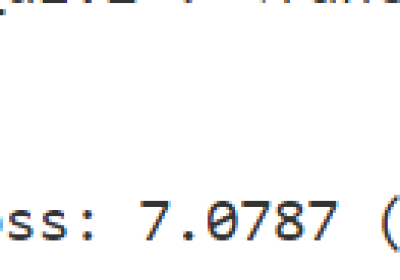最近一段时间看论文代码,发现有不少项目用到了einops库来实现语义化操作,感觉很好用,所以写一个博客来记录下,以免以后要用到。
维度交换
import torch
from einops import rearrange
input_tensor = torch.randint(low=0,high=255,size=(2,3,224,224)) # 创建一个batch_size为2,分辨率为224*224的RGB图片
print(input_tensor.shape)
# 交换顺序
output_tensor = rearrange(input_tensor,"bs c h w -> bs h w c")
print(output_tensor.shape)维度合并
import torch
from einops import rearrange
input_tensor = torch.randint(low=0,high=255,size=(2,3,224,224)) # 创建一个batch_size为2,分辨率为224*224的RGB图片
print(input_tensor.shape)
# 维度合并
output_tensor = rearrange(input_tensor,"bs c h w -> bs c (h w)")
print(output_tensor.shape)等价于
print(input_tensor.view(input_tensor.shape[0],input_tensor.shape[1],input_tensor.shape[2]*input_tensor.shape[3]).shape)维度拆分
拆分时需要指定拆分的规则
import torch
from einops import rearrange
input_tensor = torch.randint(low=0,high=255,size=(2,3,224*224)) # 创建一个batch_size为2,分辨率为224*224的RGB图片
print(input_tensor.shape)
# 维度拆分
output_tensor = rearrange(input_tensor,"bs c (h w) -> bs c h w",h=224)
print(output_tensor.shape)降维
对某个维度以求平均/最大/最小/求和/求乘积的形式降维4
import torch
from einops import rearrange, reduce
input_tensor = torch.randint(low=0,high=255,size=(2,3,224,224)) # 创建一个batch_size为2,分辨率为224*224的RGB图片
input_tensor = input_tensor.to(float)
print(input_tensor.shape)
# 降维
output_tensor = reduce(input_tensor,"bs c h w -> bs h w","mean")
print(output_tensor.shape)对某个维度求其平均/最大/最小/求和/求乘积
对batch中的每个图片的每个chanel,逐行求均值
import torch
from einops import rearrange, reduce
input_tensor = torch.randint(low=0,high=255,size=(2,3,224,224)) # 创建一个batch_size为2,分辨率为224*224的RGB图片
input_tensor = input_tensor.to(float)
print(input_tensor.shape)
output_tensor = reduce(input_tensor,"bs c h w -> bs c h ()","mean")
print(output_tensor.shape)对batch中的每个图片,逐chanel求均值
import torch
from einops import rearrange, reduce
input_tensor = torch.randint(low=0,high=255,size=(2,3,224,224)) # 创建一个batch_size为2,分辨率为224*224的RGB图片
input_tensor = input_tensor.to(float)
print(input_tensor.shape)
output_tensor = reduce(input_tensor,"bs c h w -> bs c () ()","mean")
print(output_tensor.shape)2D MaxPooling (Kernel_size = 2*2)
y1 = reduce(x, 'b c (h1 h2) (w1 w2) -> b c h1 w1', 'max', h2=2, w2=2)Adaptive 2d max-pooling to 3 * 4 grid
reduce(x, 'b c (h1 h2) (w1 w2) -> b c h1 w1', 'max', h1=3, w1=4)添加/删除某个维度
x = rearrange(ims, "b h w c -> b 1 h w 1 c")
x = rearrange(x, "b 1 h w 1 c -> b h w c")重复
把new_axis后面的东西重复
repeat(x, "h w c -> h new_axis w c", new_axis=5)沿着某个维度重复
repeat(ims, "h w c -> h (repeat w) c", repeat=3)重复每个元素
repeat(ims[0], "h w c -> h (w repeat) c", repeat=3)






